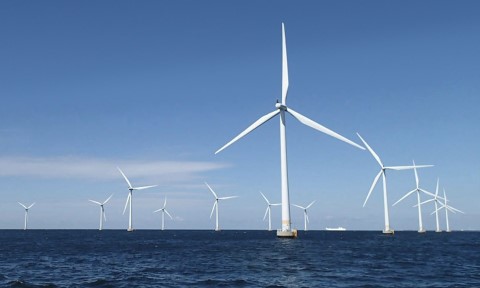Vattenfall’s business is in general progressing well. We benefit from our integrated business model with better results from Distribution, Heat and Customers & Solutions. However, overall we report a lower result for the half year, mainly due to an impairment in offshore wind power. Falling market prices were partly compensated by our price hedges.
Vattenfall’s President and CEO Anna Borg comments on the interim report for January-June 2023:
Compared to 2022, electricity prices in the Nordics have almost halved,
while the difference between electricity price areas have decreased
significantly. In northern Sweden, spot prices have nevertheless been
higher, which together with the effects of price hedging has contributed to
Vattenfall being paid more for its electricity in the Nordics.
On the continent, electricity prices have also been significantly lower, which
affects the result from the Wind segment. This has an additional
impact on the Power Generation segment where the results from our
continental price hedges are reported. These have not been as effective
as in the Nordics.
Higher costs, especially in offshore wind power
Although demand for fossil-free electricity is greater than ever, the
market for offshore wind power is challenging. Higher inflation and
capital costs are affecting the entire energy sector, but the geopolitical
situation has made offshore wind and its supply chain particularly
vulnerable. Overall, we see cost increases up to 40%.
This development affects future profitability and means that Vattenfall makes
an impairment for wind power in Norfolk, UK, with a total impact on
earnings of SEK 5.5 billion. We have decided to stop the development
of Norfolk Boreas in its current form and not take an investment
decision now due to mentioned factors, which triggers the impairment.
We will examine the best way forward for the entire Norfolk Zone, which
in addition to Boreas also includes the Vanguard East and West
projects. Over the past decade, Vattenfall has built up its wind
operations which today is a valuable and profitable business generating
an underlying profit of more than SEK 16 billion last year. We have
attractive wind power projects in the pipeline, and investment decisions
will always be based on profitability. We are convinced that offshore
wind power is crucial for energy security and meeting the climate goals
in Europe.
The profit for the period in the first half of the year amounted to SEK 6.9
billion, which is SEK 3.4 billion lower than in 2022. The impairment of
Norfolk Boreas is partly offset by a positive financial net due to higher
returns from the Nuclear Waste Fund.
A profitable and sustainable business model
Vattenfall reports higher contributions from both the heat and customer
business. In Germany, we now have over 5 million customers, which
makes Vattenfall one of the three largest energy suppliers for private
customers in the country. However, lower contributions from Power
Generation and Wind generate a lower underlying profit for the first half
of 2023. The underlying profit for Vattenfall is SEK 14.6 billion, which is
SEK 1.7 billion less compared to the same period in 2022.
Overall, Vattenfall has a continued stable capital structure with
reassuring cash flow in relation to our financial commitments. The return
on capital employed amounted to 0.5% and is affected by impairments
and the valuation of electricity and fuel contracts at fair value. On an
underlying basis, the figure however amounted to 10.7%, which
demonstrates that our diversified and integrated business model is
working.
Additional steps towards a fossil-free future
Vattenfall’s goal is to enable fossil-free living. This permeates all of our
operations and means we stand strong as a company. In June, Vattenfall
was one of nine companies globally to have its net-zero emissions
targets by 2040 verified by the Science Based Target Initiative (SBTI).
We also recently inaugurated Vattenfall’s largest onshore wind farm in
the UK, South Kyle, and have completed the construction of the offshore
wind farm Hollandse Kust Zuid in the Netherlands.
We continue to work on our preliminary study on the feasibility regarding
new construction of small modular nuclear reactors (SMR) in Sweden, a
study which is scheduled to be completed by the end of the year. New
nuclear power, alongside other fossil-free energy sources, will be crucial
in ensuring that Sweden will meet the increasing demand for electricity in
the long-term.
First six months 2023
Read more about the result for the first six months 2023 (PDF)


